🏃 Sports for Children with ASD
Physical movement and regular sports aren't just directly positive for strengthening the body and general physical health in children; they also serve as indispensable, fundamental allies for holistic development across emotional, social, and cognitive dimensions, especially for children diagnosed with Autism Spectrum Disorder (ASD). Through sports participation, provided these activities are carefully adapted to each child's individual characteristics, needs, and capabilities, it's possible to significantly boost diverse skills like sustained concentration, verbal and non-verbal language development, learning and managing emotional self-regulation for stress or frustration, active and constructive socialization in group settings, and, of course, building and strengthening positive self-esteem that contributes to overall well-being. In this section, we'll delve deeper into which sports and physical activities may be most beneficial for each child on the spectrum, considering their particularities and preferences, how to make appropriate and respectful choices for these sports activities, and what strategies families and caregivers can implement to effectively and lovingly support this process, facilitating the sports experience to become a space for growth, learning, and enjoyment.
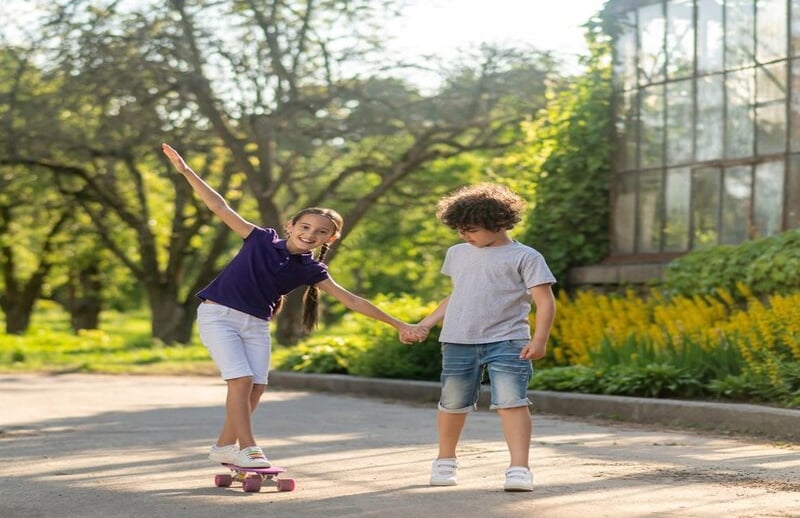

🧠 Holistic Benefits of Sports in Autism
Motor Development and Coordination:
Regular sports and physical activities are vital for improving and strengthening diverse motor skills crucial for daily life and global development in children with Autism Spectrum Disorder (ASD). Specifically, sports enhance both gross motor skills—involving large muscle groups and abilities like running, jumping, throwing, or climbing—and fine motor skills, referring to more precise, delicate movements such as gripping small objects or manipulating tools. Furthermore, these activities foster better body balance, the motor planning needed for coordinated movement sequences, and sensory integration, the ability to process and organize signals from the body and environment for appropriate responses. For example, exercises like running on different surfaces, jumping obstacles, or swimming generate diverse sensory stimuli that help improve body schema—the child's conscious and unconscious perception of their own body—which is fundamental for promoting autonomy and independence in daily activities.
Emotional and Sensory Self-Regulation:
Regular physical exercise also acts as a natural mechanism to release accumulated tension in the body and mind, often manifesting as anxiety, stress, or irritability, very common in children with ASD. Sports contribute to the regulation of body chemicals, such as reducing cortisol—the stress hormone—and increasing endorphins, which create feelings of well-being. This hormonal regulation helps channel energy positively, especially for children with hyperactivity or impulse control difficulties, promoting more balanced and stable emotional states. Likewise, sports offer a safe space for children to express emotions and bodily sensations, facilitating sensory self-regulation and reducing behaviors associated with sensory overload or under-stimulation.
Promotion of Social Skills:
Participating in group sports or shared physical activities presents a unique opportunity for children with ASD to develop and practice fundamental social skills. In these contexts, children learn to understand and respect basic coexistence rules, such as waiting their turn, following instructions, cooperating with peers, and accepting frustration from defeat or error. These social experiences, often difficult outside the structured sports environment, become more accessible and motivating due to the playful component and teamwork. Even seemingly individual sports can become spaces for social interaction, whether by sharing space, cheering on others, or participating in friendly competitions. These dynamics foster bond creation, empathy, and communication, both verbal and non-verbal, strengthening social integration.
Increased Self-Esteem:
Overcoming physical and athletic challenges, however small, profoundly impacts building a healthy self-image and developing solid self-esteem in children with ASD. Sports provide an opportunity to set concrete, achievable goals, like improving a jump, completing a swim lap, or learning a new technique, which, when achieved, generate satisfaction and personal pride. Furthermore, recognition and positive reinforcement from coaches, family, and peers act as powerful motivators that boost confidence and a sense of competence. These experiences of success and overcoming contribute to the child perceiving themselves as capable, valuable, and worthy of recognition—key elements for their long-term emotional and social well-being.
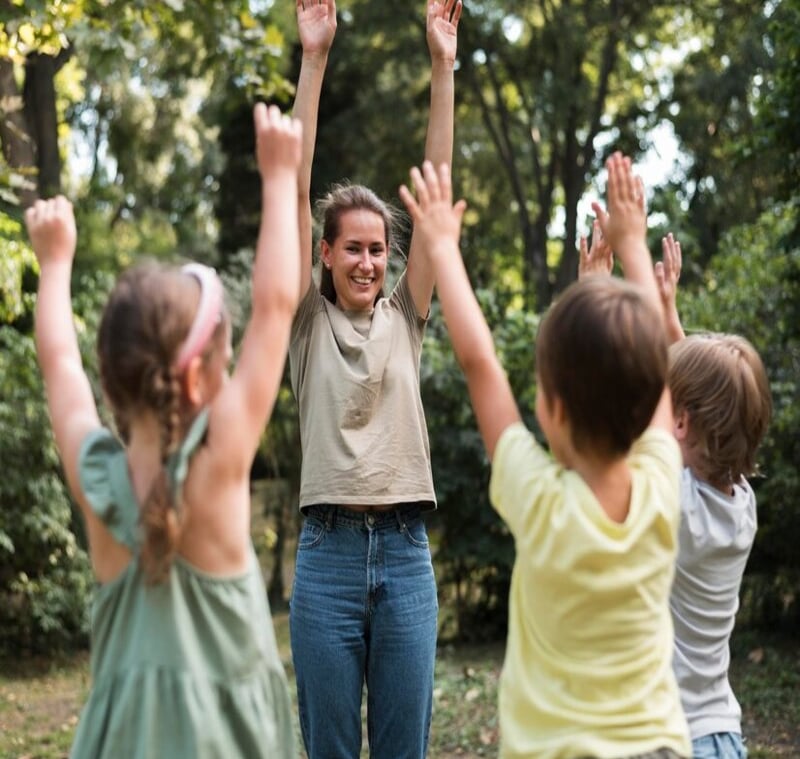

🏊♂️Adapted Swimming: The Therapeutic Power of Water
Water is far more than just a space for play or recreation; it's an incredibly valuable and beneficial therapeutic environment, especially for children with Autism Spectrum Disorder (ASD). This liquid medium offers uniform, constant pressure across the entire body, translating into a feeling akin to a "sensory hug," capable of generating a profoundly calming and relaxing effect on the nervous system. This total contact with water directly aids in central nervous system regulation, helping reduce frequent episodes of anxiety, agitation, or sensory overload often experienced by many children on the spectrum. Furthermore, the controlled water temperature contributes to a safe, comfortable environment, promoting the sense of well-being and body security essential for active, pleasurable participation.
Within the aquatic environment, children's movements naturally become smoother, more fluid, controlled, and lighter due to water resistance, without the harsh impact of land-based activities. This feature allows children with ASD to develop and strengthen key aspects like motor coordination, deep body awareness, and muscle strength, all without risking impacts or extreme fatigue that could demotivate them or cause physical discomfort. Swimming, by combining movement, breathing, and rhythm, also acts as a cardiovascular exercise that significantly improves respiratory function, contributes to better posture, and stimulates the sense of balance, which can be impaired in many children with autism. This conjunction of physical benefits is vital for enhancing each child's quality of life and motor autonomy.
Adapted swimming classes are carefully designed to respect each child's individual pace, particular abilities, and unique characteristics with ASD. Strong emphasis is placed on building and maintaining a solid, trustworthy bond with the instructor, as this relationship forms the basis for a trusting, secure, and motivating environment that facilitates learning. Play is considered a fundamental channel for learning within adapted swimming, allowing the child to explore water at their own pace, without pressure, and always in a playful, positive setting. Additionally, visual anticipation strategies like pictograms, structured routines, or visual aids are used to let the child know what to expect in each session, reducing anxiety and aiding comprehension. Consistent, safe repetition of activities provides structure and reinforces confidence, helping solidify learning stably and lastingly.
💡 This aquatic space is also an ideal context to promote non-verbal communication, especially through imitating gestures, gazes, and body signals, and to foster spontaneous social interaction, even with other children participating in classes. Simple water games, designed to promote joint participation, sharing, and cooperation, allow children to naturally experience the pleasure of social contact and emotional connection in a relaxed, motivating environment.
📌 Ideal for:
Children exhibiting high levels of anxiety or stress, tactile hypersensitivity that makes land contact difficult, hyperactivity that is positively channeled in the aquatic environment, low muscle tone that improves with water resistance work, motor planning challenges that are eased by the water's support and control, or constant needs for emotional regulation that benefit from the inherent calmness of the aquatic setting.
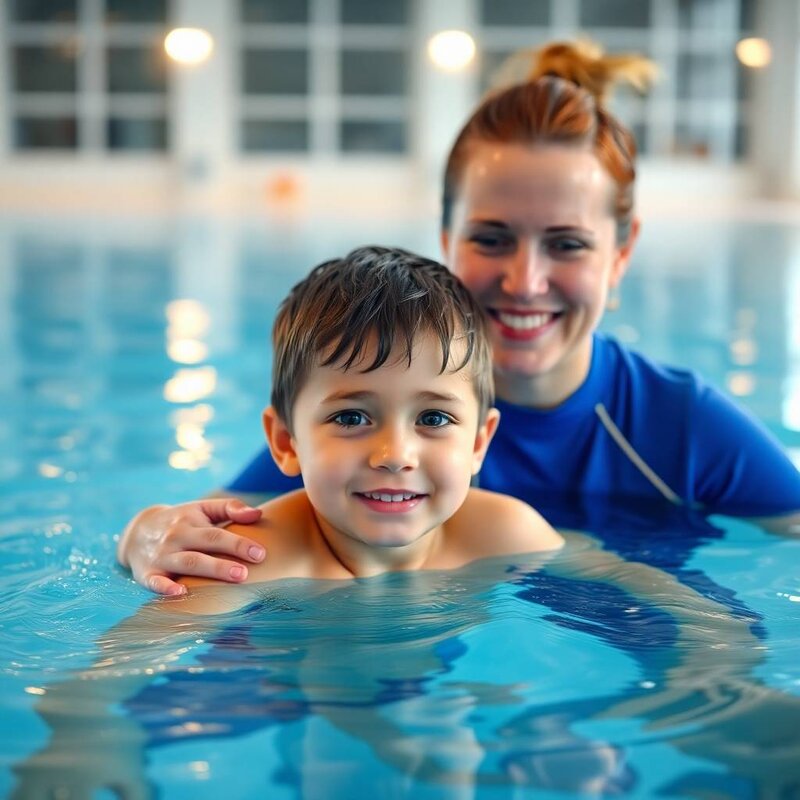

🐴Equine Therapy: Emotional and Sensory Connection on Four Legs
Riding a horse transcends the concept of simple physical activity or recreation; it's an integral therapeutic experience simultaneously engaging the body, mind, and emotions of the practitioner, especially for children with Autism Spectrum Disorder (ASD). Equine therapy, as a therapeutic modality, excels at intensely stimulating several fundamental neurophysiological systems, including the vestibular system (responsible for balance, spatial orientation, and movement perception), the proprioceptive system (in charge of body awareness and spatial perception), and the general sensory system (processing tactile, auditory, and visual stimuli). Interaction with the horse, with its rhythmic, predictable movement, helps regulate the central nervous system's response to multiple environmental stimuli, promoting greater emotional and physical stability.
Each step the horse takes generates a unique three-dimensional movement pattern closely resembling human gait, making it a powerful therapeutic tool for improving motor coordination, muscle tone, balance, and body posture. Crucially, all this happens without the child needing to exert overly demanding conscious or voluntary effort. This rhythmic, repetitive, and predictable movement, characteristic of equine locomotion, acts as a deep, regulating stimulus for the nervous system of children with ASD, helping them synchronize their movements and develop greater postural control and stability—aspects often challenging for them—positively impacting their quality of life and functional autonomy.
However, the most extraordinary and valuable aspect of this therapy is the intense and genuine emotional connection that can be established between the child and the animal. For many autistic children who face great difficulties bonding with other humans or expressing emotions, the relationship with the horse becomes a spontaneous, affective, and secure experience where they can find trust and companionship without the complexity of verbal language or typical social pressures. This bond with the horse not only strengthens empathy and joint attention but also promotes emotional anticipation and awakens the desire to communicate and relate, even in children with limited, scarce, or absent verbal language, leading to significant advancements in their social and emotional development.
Equine therapy sessions are led and supervised by highly trained professionals specializing in autism and equine therapies, who design and adapt each activity with clear, specific therapeutic objectives integrated within the equestrian routine. At all times, the particular pace, individual needs, and emotional state of each child are respected, ensuring a positive, respectful, and motivating experience. Additionally, these specialists work as a team with other therapists or family members to maximize benefits and ensure continuity and coherence in the therapeutic process.
💡 Furthermore, the natural environment where equine therapy usually takes place—open spaces, surrounded by greenery, fresh air, and free from invasive or overwhelming stimuli—becomes an ideal setting for working with calm, enjoyment, and connection with nature. This environment helps reduce stress and anxiety, making the child feel contained, relaxed, and willing to explore new experiences, which is fundamental for the intervention's success and sustained improvement in their overall well-being.
📌 Ideal for:
Children facing significant challenges in verbal language or oral communication, difficulties in registering and becoming aware of their own body in space, complex problems in emotional interaction with others, or low social motivation. It's also particularly beneficial for those requiring integrated multi-sensory stimuli in a respectful, calm context, and for those needing to develop emotional and physical self-regulation skills through an authentic and meaningful emotional bond.
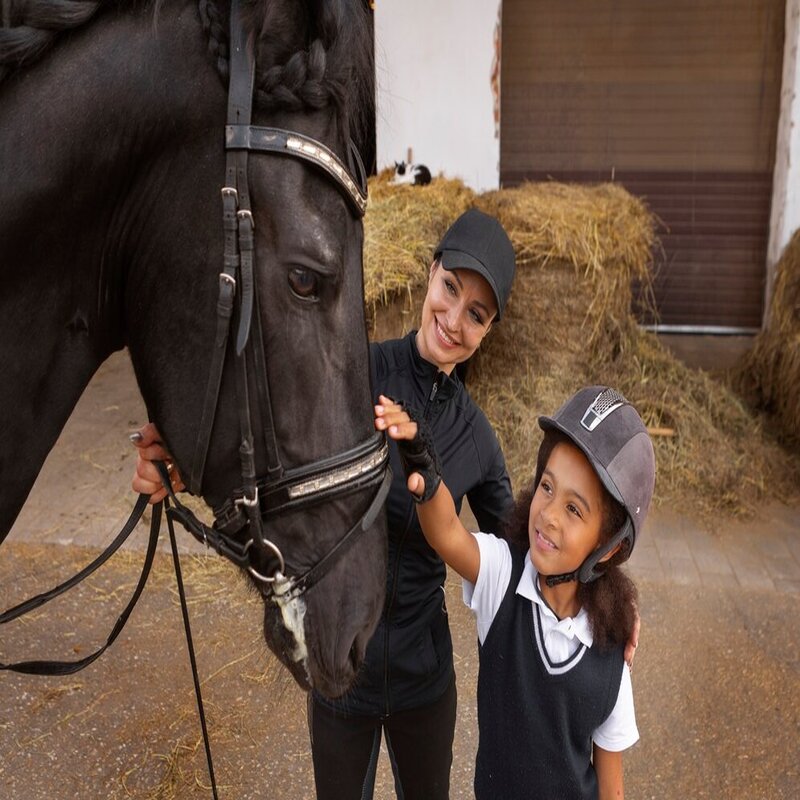

🥋 Adapted Martial Arts: Structure and Respect
Martial arts, in their many forms like Judo, Taekwondo, or Karate, aren't just physical practices with self-defense techniques; they're also genuine formative paths that can be profoundly beneficial for the holistic development of children with Autism Spectrum Disorder (ASD), provided they're applied with an inclusive, understanding, and pedagogically adapted approach. These ancient disciplines train not only the body but also the mind and will, offering tools that help shape character, promote emotional balance, and foster respectful conduct towards oneself and others. When implemented in a therapeutic, safe environment with instructors trained in neurodiversity, martial arts can become a space for personal growth where each child can explore their abilities, strengthen their identity, and overcome individual challenges without needing to compare themselves to others.
One of the most valuable aspects of adapted martial arts is their clear, predictable, and consistent structure, repeated class after class, which is highly beneficial for many children with ASD, who often find calm and confidence in routine and well-defined environments. Each session follows a specific sequence including greeting rituals, breathing exercises, determined stances, patterned movements, and explicit rules of respect, silence, and attention. This organization fosters anticipation skills, reduces anxiety about the unknown, and strengthens internal security—three fundamental pillars for meaningful, sustained learning. Moreover, knowing exactly what to expect and how to behave at all times allows children to relax, concentrate, and actively participate without fear of making mistakes.
From an emotional and behavioral standpoint, martial arts also serve as an excellent channel to transform and redirect accumulated energy in children, especially those with high impulsivity, irritability, or difficulty managing emotions. Through guided, repetitive, and goal-oriented physical exercises, children can learn to self-regulate their behavior, control impulses, manage frustration, and significantly improve their tolerance for waiting, taking turns, and boundaries. This internal training is progressive, in an environment of mutual respect, where effort and perseverance are valued more than technical perfection, which is ideal for fostering positive, realistic self-esteem. Breathing techniques, moments of pause, and mindfulness exercises included in many classes also help cultivate concentration and self-control.
Another major contribution of these disciplines is the development of body awareness, an aspect often impaired in many children with ASD, which can be effectively worked on through conscious movements, body postures, balance, and coordination. Regular practice benefits both gross motor skills—like jumping, turning, and stability—and fine motor skills, activated in controlled movements, hand positions, or gripping and defense techniques. Furthermore, martial arts promote focus on the here and now, helping the child anchor in the present moment and reduce dispersion, anticipatory anxiety, or the tendency to disconnect from the environment. Over time, many children gain a sense of control over their own body, leading to greater autonomy and personal confidence.
Adapted classes are usually designed to be personalized or taught in small groups, allowing for close attention, sensitive support, and respect for each child's individual pace. Instructors trained in neurodiversity integrate multiple resources like visual aids (pictograms, gestural cues), clear and concrete instructions, visual routines, and planned rest times, all contributing to effective, motivating, and sustained learning. In many cases, these spaces transform into true supportive communities where children feel valued, accepted, and empowered, achieving not only physical but also emotional and social progress. Some even go on to compete or present public exhibitions, which reinforces their self-esteem, sense of accomplishment, and integration with their environment.
📌 Ideal for:
Children with difficulty sustaining attention, high impulsivity, a need for structure and clear boundaries, or who benefit from environments promoting respect, repetition, order, and emotional self-regulation. Also recommended for those needing to develop motor skills, strengthen self-esteem, or channel their energy constructively and meaningfully.
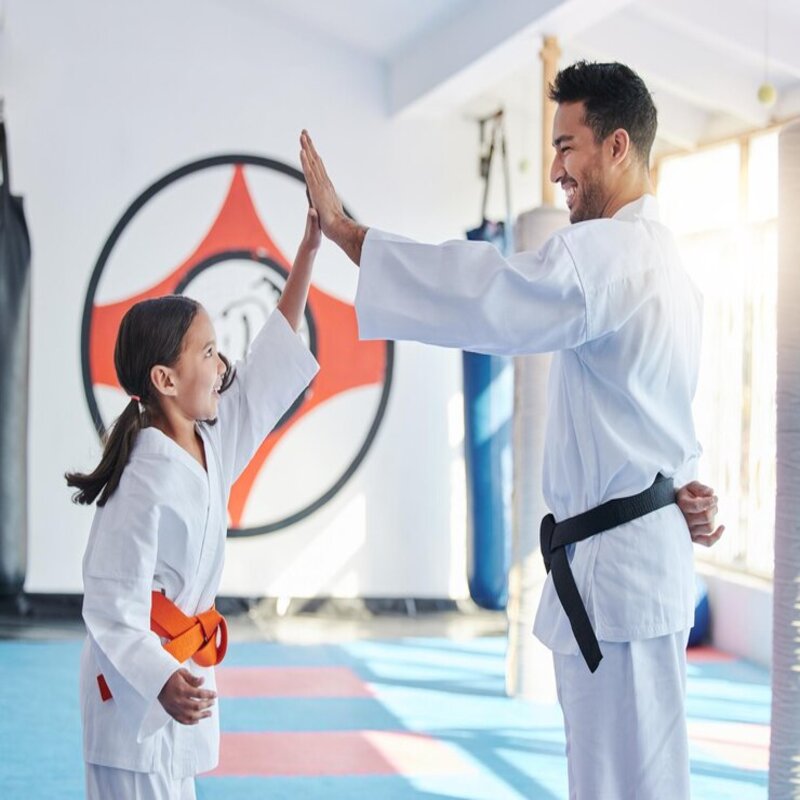

Adapted yoga and mindful movements—including gentle stretches, guided breathing, rhythmic body sequences, and mindful pauses—represent one of the most complete and accessible practices for children with Autism Spectrum Disorder (ASD), especially when integrated into a sensory and playful approach. Far from just a series of physical postures, yoga becomes a holistic experience connecting body, mind, and emotions, facilitating a space for self-regulation, calm, and inner connection. The possibility of performing these exercises in an adapted, personalized way allows each child to explore their body safely and without demands, respecting their own rhythms and limits. Incorporating sensory games—like using textures, soft sounds, or guided movements with objects like scarves or ribbons—enhances enjoyment and strengthens the bond with the instructor or caregiver. Furthermore, being a practice that can be done both in groups and individual settings, yoga offers great versatility for therapeutic, school, or family contexts, serving as a tool for both physical and emotional well-being.
One of yoga's greatest contributions for children with ASD is the progressive development of body awareness. Many children on the spectrum struggle to register how their bodies feel, where they are positioned in space, or how their movements connect with the emotions they experience. Through slow, guided, and repetitive sequences, yoga allows them to connect with their body lovingly, without pressure, which is fundamental for strengthening motor planning, balance, coordination, and laterality. Mindful breathing—one of yoga's foundations—becomes a powerful tool to regulate the nervous system, decrease hypersensitivity, reduce anxiety levels, and promote a general state of serenity. Even children with low muscle tone, clumsy movements, or postural difficulties can benefit enormously, as the body work adapts to their capabilities without forcing them, also promoting greater autonomy in daily activities.
From an emotional perspective, yoga offers a safe environment where the child can explore their emotions without judgment or external pressure. The slow movement, controlled breathing, and practice of holding each posture for a few seconds stimulate introspection, mindfulness, and the recognition of internal sensations, which is key to understanding and regulating emotional states. For many children, this represents a way to "pause the world," reduce external stimuli, and reconnect with their own internal rhythm, something that can make a significant difference in managing stress, frustration, or sensory overload. The final relaxation, often accompanied by soft music, dim lights, or weighted blankets, transforms into a restorative experience that not only improves mood but can also promote sleep quality and reduce challenging behaviors associated with fatigue or accumulated emotional tension.
Implementing yoga for children with ASD should include visual adaptations, sensory supports, and clear, concrete guidance that facilitates active participation without causing confusion or disorientation. Classes can be individual or in small groups, preferably led by professionals trained in neurodiversity or specialized occupational therapists. However, it's also a very valuable practice at home: many families incorporate morning or evening yoga routines, using pictograms, step-by-step video sequences, or even body stories that combine play with mindful movement. Parents and caregivers can also participate, turning the practice into an opportunity for affective connection and mutual emotional containment. Elements like yoga balls, foam blocks, weighted blankets, warm lights, aromatherapy, or instrumental music help create a gentle, contained, and sensory-pleasant environment, further facilitating the relaxation and learning process.
📌 Ideal for:
Children with difficulty falling asleep, high anxiety, sensory overload meltdowns, low muscle tone, or a need to incorporate moments of pause, calm, and reconnection throughout the day. It is also highly recommended as a preventive tool to improve general well-being, strengthen the relationship with the environment, and cultivate greater emotional awareness from an early age.
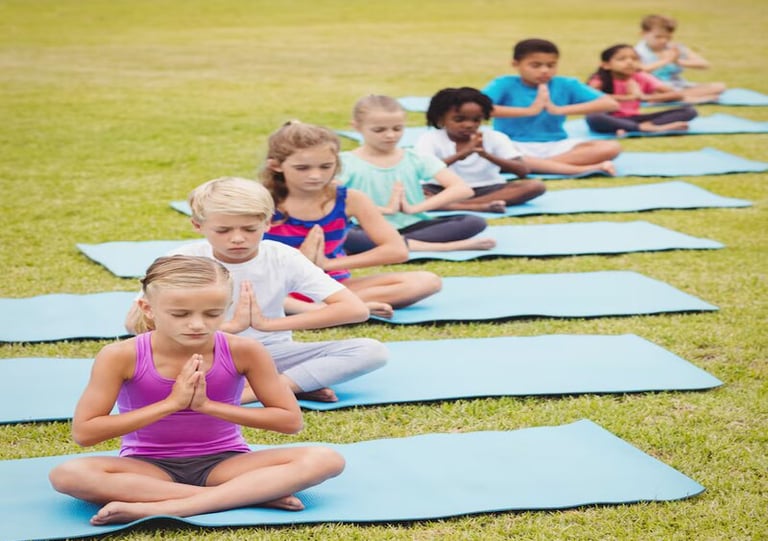

🧘♂️ Yoga and Mindful Movement: Connecting with Body and Emotions
🌳 Therapeutic Walks: Reconnecting with Nature Through Play and Calm
Walking in natural spaces—like parks, ecological reserves, large squares, green trails, or botanical gardens—goes far beyond simple physical activity. For children with Autism Spectrum Disorder (ASD), it represents a true opportunity for deep connection with their environment and themselves, from a respectful, pressure-free, and highly therapeutic place. Nature offers an environment that is usually much more predictable and gentle than traditional urban spaces. Unlike noisy streets, shopping centers with bright lights, or school environments saturated with stimuli, green spaces provide visual calm, organic sounds, and a sense of expansion that helps regulate the nervous system. The breeze, bird song, the rustle of leaves underfoot, the feeling of sun on the skin, or the smell of wet grass generate rich, yet non-invasive, sensory stimulation that can be profoundly beneficial for those with hypersensitivity, anxiety, or frequent meltdowns. Even a short walk can become an integrating experience if done with mindfulness, loving presence, and no performance expectations.
These walks can be greatly enhanced when transformed into a playful adventure adapted to each child's style. Activities like visual scavenger hunts—for example: finding leaves of a certain color, textured stones, insects, specific flower or cloud shapes—stimulate shared attention, visual perception, descriptive language, and cognitive planning. Routines can also be incorporated, such as following a simple map with pictograms, marking stations with visual signals, or collecting natural elements that can later be classified, observed, or used in art activities at home or in the classroom. This way of exploring nature allows for working on multiple cognitive, communicative, and motor skills without the child perceiving it as formal "therapy." The important thing is that the route respects the child's own pace, allowing them to stop, observe, touch, and enjoy, without rushing or unnecessary interruptions. In this context, the adult becomes a guide and observer, accompanying without imposing, allowing play and curiosity to lead the experience.
One of the greatest contributions of these walks is that they allow for respecting each child's sensory and cognitive uniqueness. Some children on the spectrum intensely enjoy silence; others seek more pronounced tactile or auditory stimuli. Walking in nature allows each one to find what they need without social demands or forced stimuli. Moreover, by fostering free and spontaneous play, creativity, autonomy, emotional security, and the pleasure of discovering the world on their own terms are stimulated. Often, controlled environments cannot achieve this level of connection and enjoyment. On the contrary, walking barefoot on grass, feeling the earth, touching stream water, or simply running among trees can have a therapeutic effect superior to many traditional interventions. These activities also allow for working on body awareness, balance, and coordination, as natural terrain often presents variations that challenge movement and enrich the motor experience.
Furthermore, therapeutic walks can serve as a very valuable bonding bridge, both with significant adults (family, therapists, or teachers) and with peers. Unlike other activities requiring complex social skills like verbal language, emotional interpretation, or play organization, walking together in silence, observing something in common, or collecting natural elements allows for sharing through presence, without pressure. It's a way of being "with the other" without needing to constantly talk, but building trust, emotional connection, and shared experience. Even in children with selective mutism or significant communicative difficulties, this type of outing can open the door to greater expressiveness, spontaneous eye contact, or the initiative to show something found during the walk. Accompanying these outings with predictable routines, supportive sensory materials (like backpacks with regulation objects), and planned breaks reinforces the positive experience and facilitates its integration into daily family or school life.
📌 Ideal for:
Children with a need for contact with nature, extreme sensitivity to urban stimuli, high anxiety, sensory overload, selective mutism, difficulty sustaining attention in closed contexts, or who simply enjoy free exploration without rigid structure. It is also ideal for fostering bonds through calm, emotional regulation, and shared curiosity.
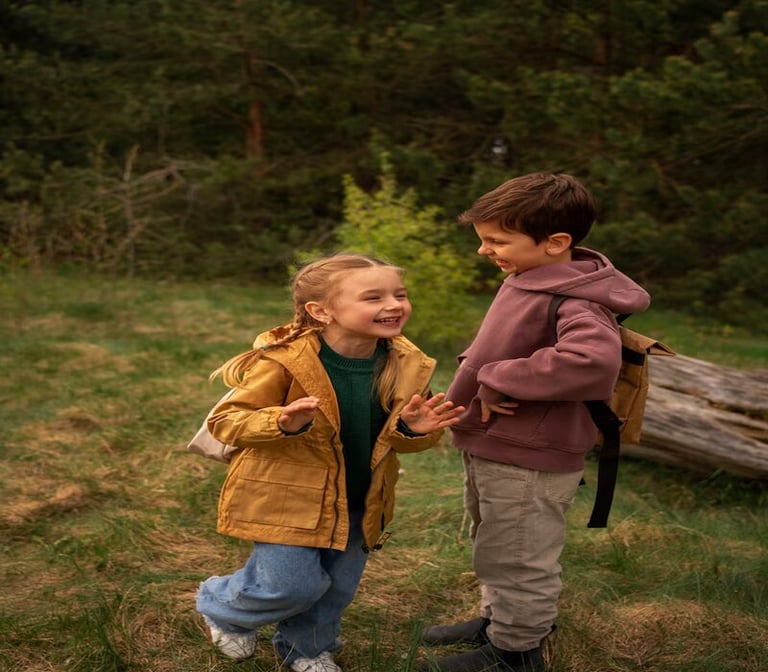

💃 Adapted Dance: Free Expression of Body, Emotions, and Identity
Dance, as a free, artistic, and emotionally connected form of body expression, can be a deeply transformative experience for children with Autism Spectrum Disorder (ASD). When offered inclusively, respectfully, and adapted to each child's sensory and cognitive particularities, dance transcends physical movement. It becomes a tool for non-verbal communication, emotional self-regulation, and self-esteem building. Through music, rhythm, simple or improvised step sequences, and the ability to explore space with their bodies, many children discover new ways to express themselves, play, and interact with others, even with limited verbal language or conversational difficulties. Dance invites the child to be present, feel their body, move from within, and experience pleasure without the pressure of physical "performance."
One of dance's most significant benefits is its playful and enjoyable way of improving motor coordination, balance, and body awareness. By following repetitive rhythmic patterns or simple choreographies—individually, in duos, or groups—children stimulate brain areas related to motor planning, sequential memory, and sustained attention. For children with ASD, where these functions often need more support, dance offers a friendly and accessible channel. Additionally, incorporating sensory elements like colored scarves, soft lights, music with varying intensities, or percussion instruments also works on sensory integration, adapting the environment to each child's specific needs. This allows them to explore movement without being overwhelmed by external stimuli, strengthening their sensory tolerance and exploratory capacity.
Another key aspect is the emotional and social impact of adapted dance. Participating in group classes or expressive movement workshops provides valuable opportunities to share with others, imitate movements, coordinate with a partner, respond to instructions, and, most importantly, feel part of a collective experience. In these spaces, movement diversity is valued, non-judgmental acceptance is promoted, and authenticity is celebrated. This strengthens self-esteem, a sense of belonging, and the recognition of one's body as a legitimate tool for expression. For many children with ASD who have experienced rejection, discomfort, or invisibility, these activities can help redefine their relationship with their bodies and others through enjoyment, art, and self-acceptance.
Adapted dance workshops are typically led by instructors trained in both body expression and neurodiversity, ensuring a respectful and enriching approach. They work with clear routines, visual supports, pause times, and emotional containment. Dance can also be done at home with family accompaniment and the child's favorite songs, creating moments of emotional connection and shared joy. The most important thing is that the activity is presented as a free play, without demands to "do it well," prioritizing movement exploration, aesthetic enjoyment, and emotional connection.
📌 Ideal for: Children who enjoy music, need non-verbal emotional expression, have difficulties connecting with their bodies, low self-esteem, social anxiety, or an interest in artistic and playful activities. It is also very useful for children with body rigidity or who require more creative and emotional movement experiences.


🚴♂️ Therapeutic Cycling: Freedom, Coordination, and Environmental Discovery
Riding a bicycle—be it with training wheels, adapted bikes, tricycles, or tandems—is not just one of the first experiences of physical autonomy for many children, but also a powerful therapeutic and sensory integration tool, especially for children with Autism Spectrum Disorder (ASD). Cycling offers a fluid, rhythmic, and sustained movement experience that simultaneously stimulates muscles, the vestibular system (balance), bilateral coordination, and motor planning. Unlike other sports requiring constant social interaction, biking allows enjoyment of the outdoors, changing visual surroundings, and physical exertion without complex social cues. This makes it an ideal activity for children who get overwhelmed in group or structured settings.
Biking involves numerous neurological processes that activate simultaneously and harmoniously. From maintaining balance, pedaling rhythmically, coordinating arm and leg movements, staying focused on the path, to reacting to environmental obstacles, children develop multiple skills that positively impact their overall development. Furthermore, constant motion and the sensation of forward progress help regulate anxiety, release accumulated tension, increase brain oxygenation, and improve concentration. Many occupational therapists recommend cycling as an emotional self-regulation strategy, enabling children to channel their energy safely and enjoyably. It can even be part of a daily routine as an "active break," contributing to better readiness for other cognitive or social activities.
Cycling also promotes independence, self-esteem, and a sense of accomplishment. Learning to ride a bike—even with initial assistance or balance bikes—involves overcoming personal challenges, managing fear, tolerating frustration, and celebrating small achievements, which strengthens a child's confidence in their abilities. For children with ASD, who often face frustration in group or academic settings, the bicycle can become a personal space of success and enjoyment. Additionally, if the activity is shared with an adult or sibling, it can transform into a moment of positive emotional bonding, where a path is journeyed together, conversations occur during the ride, or simply the shared scenery is enjoyed. Such experiences reinforce emotional connection and foster spontaneous interaction.
For therapeutic cycling to be truly accessible, adapting the bike type to the child's needs is essential. There are models with training wheels, tricycles with rear handles for adults, balance bikes to work on equilibrium, or tandem bikes allowing the child to pedal alongside an adult. Weighted helmets, sensory vests, pleasant-sounding bells, and safe routes with visual cues can also be used. The key is that the practice environment is safe, predictable, and motivating. A weekly family outing, a brief daily routine before school, or even integration into outdoor therapy sessions can be planned.
📌 Ideal for: Children needing to improve their coordination, motor planning, balance, emotional self-regulation skills, or self-esteem. It's also highly beneficial for those who enjoy outdoor activities, require constant movement, or face challenges in social interaction but wish to share meaningful experiences without verbal pressure.


⚽ Adapted Soccer: Team Play, Inclusion, and Motivation in Motion
Soccer, one of the world's most popular and accessible sports, can become—when appropriately adapted—a deeply enriching experience for children with Autism Spectrum Disorder (ASD). Far from focusing solely on competition or physical performance, adapted soccer promotes a child's holistic development through team play, regular physical activity, and structured social interaction. With clear rules, simple instructions, and professional guidance, this sport helps develop motor, social, and emotional skills within a motivating and culturally familiar environment. This often leads to high enthusiasm and willingness to participate from many children with ASD.
One of the main benefits of adapted soccer is the improvement of gross motor coordination, as it requires constant running, stopping, turning, kicking, and maintaining balance. These actions stimulate the vestibular and proprioceptive systems, enhancing postural control, motor planning, and body awareness. Additionally, by being in constant motion, children regulate their energy, improve overall physical fitness, and develop tolerance for effort. For children with ASD who exhibit hyperactivity or a need for sensory stimulation, this activity allows them to release tension healthily, reducing anxiety and improving sleep quality and subsequent attention.
Emotionally and socially, adapted soccer has a very positive impact. The team-play dynamic facilitates understanding roles, respecting turns, the need to communicate—verbally or non-verbally—with teammates, and developing a sense of belonging. These aspects are fundamental in developing social skills, especially for children with difficulties initiating or sustaining interactions. Through play, children learn to read emotional expressions, regulate their behavior according to the group, and experience the value of cooperation over competition. Even without direct verbal interaction, simply sharing a common goal (making a pass, defending, celebrating a goal) strengthens bonds and self-esteem.
The adapted soccer environment must be carefully planned: classes or training sessions are usually held in small groups, with short play times, frequent breaks, and a high level of structure. Visual supports (posters, pictograms, colors), predictable routines, and mediators like occupational therapists or specialized neurodiversity educators are used. Coaches adapt instructions to each child's abilities and foster inclusion with empathy, avoiding situations that might cause frustration or sensory overload. It's also common to use softer balls, bright colored cones, or vests to differentiate roles, making the game more accessible and clear.
Beyond physical skills, soccer also reinforces a sense of personal achievement: scoring a goal, completing a pass, or simply maintaining attention for a certain period is celebrated as progress, which boosts self-esteem and motivation. For many children with ASD who have experienced failure or exclusion in traditional settings, adapted soccer can represent an opportunity for success, belonging, and fun. Furthermore, it's an excellent way to strengthen bonds with important figures like parents, siblings, or therapists, who can share informal matches, encourage them, or play at home.
📌 Ideal for: Children with an interest in soccer, a need for constant movement, difficulties in social interaction, low self-esteem, or those who need to work on motor coordination in a playful way. It is also highly recommended for those who wish to be part of a group or practice a popular activity from an inclusive approach, with visual and emotional support.


🏀 Adapted Basketball: Coordination, Joint Attention, and Teamwork
Basketball, when presented in an adapted and accessible way, transforms into a powerful tool for developing multiple dimensions in children with Autism Spectrum Disorder (ASD). This sport combines rhythmic movement, visual focus, precision, and group work, simultaneously developing motor coordination, planning, concentration, and social skills. Unlike other sports with longer or slower paces, basketball offers a short, intense dynamic that's stimulating and engaging for many children, especially those who enjoy challenges with concrete goals like shooting, passing, or intercepting the ball.
From a sensory and motor perspective, basketball stimulates gross motor skills (running, jumping, stopping, throwing) and fine motor skills (ball control with one or both hands). The constant, repetitive dribbling promotes emotional regulation, and contact with the ball improves spatial awareness, posture, and muscle tone. Moreover, as it requires quick changes in direction and divided visual attention, it's ideal for enhancing concentration, motor memory, and cognitive flexibility—aspects often challenging for children with ASD.
On the social and emotional front, adapted basketball allows for work on rule-following, cooperation, recognizing simple social cues (like gestures or teammates' signals), and following instructions. Through progressive exercises, kids learn to pass the ball, wait their turn, and celebrate shared achievements. All of this strengthens their self-esteem and sense of belonging to a group. Even if they don't grasp all the nuances of the game, actively participating in a regular sports routine has a very positive impact on their motivation, initiative, and frustration tolerance.
Adapted basketball classes typically take place in school gyms or therapeutic centers, using materials like soft balls, movable hoops, or lower baskets, which allows adjusting the difficulty level for each child. Visual supports, clear instructions, and coaches trained in neurodiversity promote inclusion and celebrate progress, no matter how small.
📌 Ideal for: Children who need to improve coordination, sustained attention, group work, or sensory regulation through active and motivating routines.


⛸ Recreational Skating: Balance, Confidence, and Sensory Enjoyment
Skating—whether roller, inline, or artistic—can be a fascinating therapeutic recreational activity for many children with ASD. Far from technical demands, adapted skating seeks to connect children with their bodies, balance, movement rhythm, and the freedom of gliding. This significantly impacts self-esteem and body perception. Simply moving fluidly, without running, allows for experiencing the body in motion with lightness and control, providing pleasant sensations that promote emotional regulation.
This activity, when presented with a playful and respectful approach, becomes an opportunity for children to explore their bodies in a judgment-free context. Here, movement perfection doesn't matter; the experience of the journey does. Skating offers a space where children can flow, slide, try, make mistakes, and try again, naturally learning to tolerate frustration, modulate anxiety, and value their effort.
In motor and sensory terms, skating is excellent for working on proprioception (body's position in space), the vestibular system (balance and coordination), and motor planning. The controlled movements required to maintain balance, stop, or turn on wheels intensely stimulate the nervous system, helping integrate sensory information in an organized way. This positively affects posture, gait, muscle tone, and body awareness. Many therapists use skating as part of sensory intervention plans, as it helps organize the nervous system and channel excess energy in children with motor restlessness or tactile hypersensitivity.
Emotionally and personally, skating is an opportunity for children to face small challenges, overcome fears, and experience the pride of moving independently. Many children who feel insecure or uncoordinated on solid ground achieve a new level of autonomy and confidence when gliding on wheels. Even mistakes or falls—which are part of learning—are handled in a safe, undemanding environment, reinforcing frustration tolerance and a sense of humor. They learn they can get back up and that there's no single "right" way to move or enjoy themselves.
Furthermore, skating is an activity that can also be done with company: with an accompanying adult, a sibling playing, or a small group with professional support. This strengthens emotional bonds and creates quality shared moments. For children with ASD who struggle with social connection, sharing a rink or a game on skates can be a non-verbal yet powerful way to communicate through body and gaze.
Adapted classes include visual supports, predictable routines, safety gear, soft music, and playful exercises like following lines, dancing with lights, or collecting moving objects. They can also take place indoors or outdoors, depending on the child's sensory sensitivities. The goal isn't to compete or meet technical standards but to enjoy movement, build confidence, and expand body possibilities through a kind and inclusive approach.
📌 Ideal for: Children with balance challenges, hypotonia, motor planning difficulties, low self-esteem, or those seeking a fun, sensory way to move without competitive pressure. It's also beneficial for those needing to integrate sensory stimuli in an organized way or strengthen confidence in their own body.


🧗 Adapted Climbing: Overcoming Fears, Self-Trust, and Exploring Heights
Adapted climbing is far more than a sport: it's a transformative experience allowing children with Autism Spectrum Disorder (ASD) to explore their bodies, minds, and emotions holistically. Climbing doesn't just mean ascending a wall; it involves challenging internal limits, strengthening willpower, making autonomous decisions, and, above all, building a genuine self-bond based on trust. This discipline provides a space to face fears without pressure, through play, personal effort, and secure accompaniment, creating a positive impact far beyond the physical realm.
From a sensory and motor perspective, climbing is an incredibly rich activity: it mobilizes all muscle groups, from legs and arms to the core, fingers, and postural muscles. Each movement requires full attention, sequential planning, bilateral coordination, and constant adjustments to maintain balance. This intensely stimulates the vestibular system (regulating balance and spatial orientation) and the proprioceptive system (informing the brain about body position and exerted pressure). This translates into concrete improvements in muscle tone, body awareness, posture, and the ability to anticipate movements. Furthermore, by demanding slow, controlled, and repetitive movements, it also promotes calmness, concentration, and the organization of the central nervous system.
Emotionally and psychologically, climbing holds immense therapeutic value: it offers the opportunity to experience fear in a safe environment, where the child can decide how far they want to go, when to stop, and when to try a little more. It's not about reaching the top, but about daring to lift their feet off the ground, trusting the harness, the instructor, and ultimately, their own abilities. This gradual process of exposure to small challenges leads to advancements in emotional self-regulation, decision-making, frustration tolerance, and self-esteem building. Each section climbed represents an internal victory that boosts the sense of accomplishment and a positive self-image, especially valuable for children who have experienced repeated frustrations in other group settings.
From a cognitive and pedagogical standpoint, climbing also fosters executive planning, strategic decision-making, spatial orientation, and following visual or verbal instructions. Many centers working with neurodiversity use pictograms or visual sequences to anticipate climbing steps, which improves environmental understanding and reduces anxiety about new things. Additionally, climbing walls can be adapted by level, pace, or interest: with colors guiding the route, wide and secure holds, or even horizontal routes for those who don't want to gain height but wish to explore vertical surface movements.
The physical environment is also crucial: adapted climbing spaces are typically calm, with organized visual stimuli, few distractors, and the constant presence of instructors trained in inclusion and ASD. Emotional support, respect for each child's pace, validation of effort over outcome, and containment during moments of doubt, fear, or frustration are prioritized. Climbing can be done with soft music, with breaks when needed, and with personalized goals for each session.
Furthermore, it's an ideal activity to share with a significant adult: a parent, therapist, or teacher who also climbs alongside the child or encourages them from below. This strengthens the bond of trust and can become a very valuable space for emotional connection, where achievements, fears, and applause are shared.
📌 Ideal for: Children with low self-esteem, motor planning difficulties, a need to integrate sensory information, emotional regulation challenges, or who need to experience physical effort from a playful, safe, and empowering perspective. It's also highly recommended for children seeking concrete, structured, and motivating challenges, without competitive demands or social judgment.


🧑🏫 How to Choose the Right Sport
Choosing a sport or physical activity for a child with Autism Spectrum Disorder (ASD) isn't an automatic or universal decision. Every person on the spectrum is unique, with their own preferences, sensory needs, and communication styles. Therefore, it's essential that the selection process is based on respectful observation, active listening, and pressure-free support. The ideal sport isn't the one that "promises the most benefits," but rather the one the child enjoys, understands, and wants to repeat. Internal motivation is key for the experience to be meaningful and sustained over time.
🔍 Observe Their Natural Interests
Before thinking about formal sign-ups or activities, take time to observe what spontaneously draws their attention. Are they drawn to water, like when bathing or playing with hoses? Do they prefer outdoor movement or more enclosed, contained spaces? Do they seek rhythm, as with music or dance, or do they enjoy climbing, running, jumping? Sometimes, interests appear in home games, at the park, or at school. Identifying these clues can help you choose an activity that connects with their inner world, increasing the chances they'll enjoy and stick with it.
🧘 Avoid Overexposure to Noise, Shouting, or Crowds if Hypersensitive
Many children with ASD exhibit sensory hypersensitivity, meaning an increased perception of stimuli like sounds, lights, or textures. Sports environments with many people, loud music, whistles, shouting, or echoes can cause overload, anxiety, or even meltdowns. If you know your child reacts intensely to these stimuli, opt for quiet spaces, with few participants, during off-peak hours, or individual activities that respect their need for calm. Adapting the environment is as important as choosing the activity itself.
🧪 Gradually Try Different Activities, Without Pressure
No child should feel forced to participate in an activity that causes stress or discomfort. Therefore, it's valuable to offer them the chance to get to know different sports progressively: visit the place, observe a class, interact briefly, try some movements. The familiarization process must be respectful, without rigid expectations. Some children need several weeks to feel secure, while others integrate quickly. Giving them time, validating their emotions, and celebrating every small step is part of conscious support.
🤝 Consult Therapists or School Counselors Who Know Them Well
Professionals who support the child in their therapeutic or educational process often have valuable information about their strengths, interests, and challenges. They can help you choose activities that reinforce specific goals (like improving coordination, socialization, or self-regulation), anticipate potential difficulties, and suggest adaptations if necessary. Furthermore, they can work collaboratively with sports instructors or coaches, creating a coherent support network aligned with the child's well-being.
🏫 Choose Inclusive Spaces, with Teachers Trained in Neurodiversity
An inclusive space isn't just one that "allows everyone in," but one that adapts its offerings to each person's real needs. It's important to seek places where teachers understand autism, offer clear routines, use visual supports, are patient, flexible, and communicate respectfully. The best sports experiences happen when the adult in charge establishes a warm connection, understands the child's pace, and celebrates their achievements, beyond physical performance. Don't be afraid to ask if the place has experience with neurodivergent children: it's your right and your child's.
💬 Remember: Sport Shouldn't Be Just Another Therapy, But a Space for Enjoyment
While physical activities have many therapeutic benefits, they shouldn't be experienced as an obligation. The chosen sport should be a place where the child feels free, valued, supported, and happy. If an activity generates sustained rejection, it's a sign that it's not the right time or that adaptations are needed. Listening, observing, and providing empathetic support is the best way to help each child discover the joy of moving, playing, and growing in their own way.
📌 Key Takeaways for Choosing:
Observe their spontaneous interests.
Consider their sensory needs (noise, lights, crowds).
Allow them to try activities without demanding performance.
Consult professionals who know them deeply.
Choose inclusive spaces with teachers who understand autism.
Value enjoyment more than physical achievements.
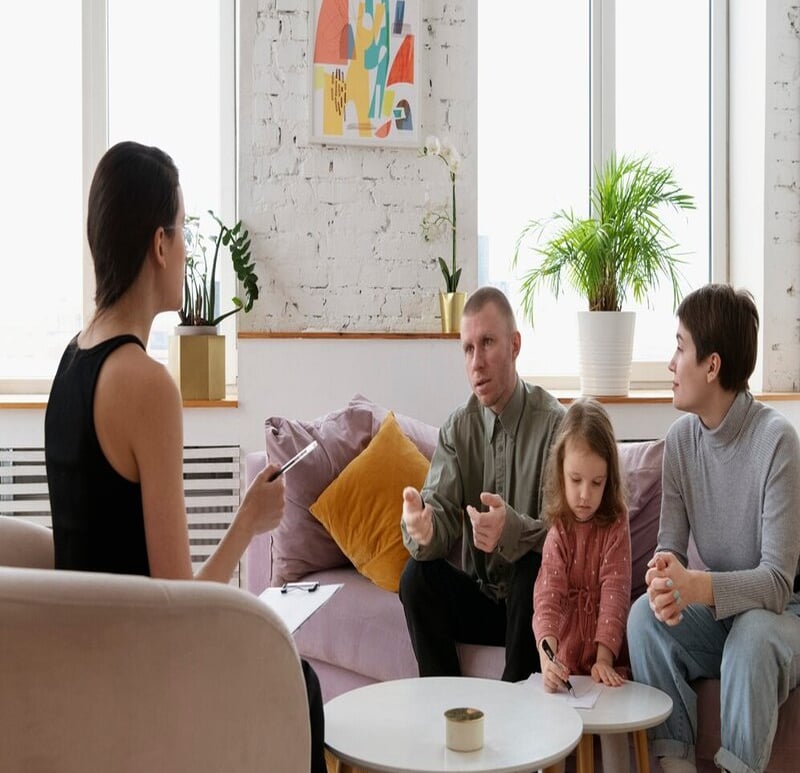

🏠 Family Support: How to Help from Home
The home is the primary environment for emotional containment and security for any child, and this is even more crucial for neurodivergent children. Active family involvement in supporting physical and sports activities can make a huge difference in a child's experience with ASD. It's not about forcing or demanding, but about offering presence, understanding, and resources that allow them to enjoy movement their own way and with confidence.
Here are some simple yet powerful strategies to support from home:
🧩 Visual Schedules
Use pictograms, drawings, or real photos to anticipate each part of the sports routine. For example: getting dressed, arriving at the venue, greeting the teacher, doing exercises, going home. These visual aids give the child structure, reduce anxiety, and help them understand what will happen before, during, and after the activity. They can be placed on the fridge, in a folder, or on a personalized visual app.
💬 Clear and Concrete Communication
Before each activity, explain in simple words what will happen. Use short, unambiguous phrases, and if possible, accompany them with images. For example: "Today we're going to the club to swim," "First we change, then we go into the water." If the child has limited verbal language, you can rely on gestures, concrete objects (like a swimsuit), or sequential images. Anticipation reduces stress and improves participation.
🧸 Flexibility and Respected Pauses
It's crucial to understand that not every day will be the same. If the child feels overwhelmed, tired, or simply needs to stop, it's valid to allow them a break. Respecting their rhythms doesn't mean giving up, but supporting without pressure. The goal isn't to "complete" the class, but for them to feel good, safe, and supported in the experience.
🎉 Reinforce Achievements and Efforts
Celebrate every small step with genuine enthusiasm. A new greeting, a mastered movement, a regulated emotion: it all counts. Positive reinforcement—like encouraging words, hugs, stickers, shared time—strengthens their self-esteem and motivates them to continue. Avoid focusing on what was "missing" or "didn't go well," and direct your attention to what they could do.
👨👩👦 Active Participation and Emotional Support
Some children need an adult to be close at the start of the activity: watching them, providing security, or even participating with them. If so, provide calm presence without invading their space. Applaud their attempts, smile, show pride in what they achieve. Your loving gaze and constant validation are a fundamental bridge to their confidence and enjoyment.
📌 Summary of Family Tools:
Prepare visual schedules for the sports routine.
Use clear, concrete communication, with visual support.
Allow pauses and breaks without punishment or judgment.
Apply constant positive reinforcement, even for minimal progress.
Offer active support if needed, celebrating their achievements.

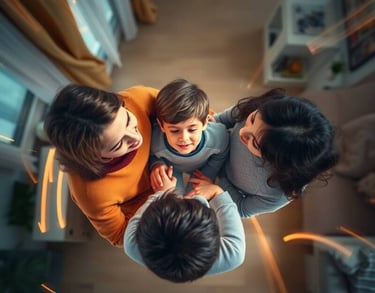
🔹 Dan Aykroyd
👻 Actor and screenwriter of "Ghostbusters" – with Asperger's
🎬 "My syndrome has given me a very rich imagination, and that has helped me a lot in my career." — Dan Aykroyd (diagnosed with autism)
🧩 Free Resource for Families and Professionals
We're gifting you a PDF activity kit, ideal for children with Autism Spectrum Disorder (ASD). It includes cutout cards, games to stimulate attention, coloring activities, playful dynamics, and much more.
📚 This material has been compiled from various autism communities with the goal of sharing, supporting, and enriching learning through love and inclusion.
💖 Download it for free and start enjoying it today!
📥
Are you a Professional or Do You Provide Services Related to ASD?
At MiRutaTEA, we're developing a new section where therapeutic companions, psychologists, speech therapists, psychopedagogues, specialized teachers, and other professionals can showcase their services through our app and website.
🧩 What Will You Be Able to Offer?
Therapeutic services, school support, or stimulation.
Workshops, group activities, or intervention proposals.
Links to your social media or professional website.
Contact information so families can easily find you.
💙 How to Join?
We'll soon launch a low-cost monthly subscription system so you can be part of our community. In the meantime, you can complete the contact form and tell us about your work.
🚀 Join a Network Designed to Connect Families with Professionals Committed to the Inclusion and Well-being of Individuals with ASD.
🔗 One Click Makes a Difference
Follow us on social media and help us reach more families with information about autism and alternative communication.
📲 Your support means a lot! 👇
💙 At MiRutaTea, we believe in the power of every voice.
Your experience can support, inspire, and help someone feel less alone.
🧩 Click the button and join the blog: read, share, and be part of the conversation.
This space is yours too.
